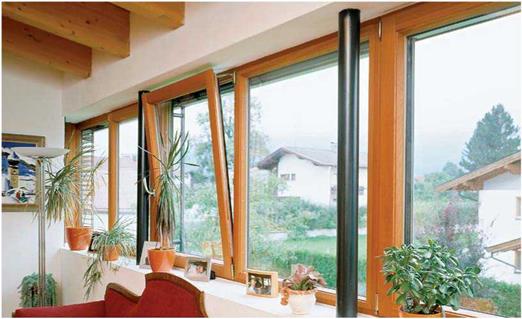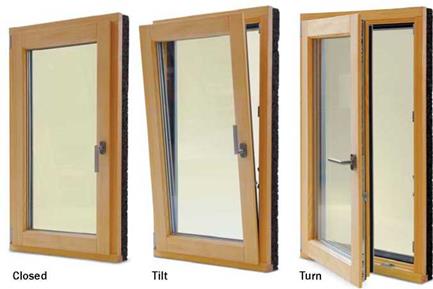Do Europeans Really Make the Best Windows?
■ BY MARTIN HOLLADAY
 |
|
A |
good window seals out cold, windy weather and admits as much light as possible into a house’s interior. While those functions seem rather obvious, some claim a new class of window can perform these duties better than any window made in the United States.
Only a handful of window manufacturers in the United States and Canada sell high-performance windows suitable for cold-climate homes. Sensing an opportunity, manufacturers from Germany and Austria have eagerly filled the market niche by introducing a host of high-performance units to American builders.
The two most important measures of a window’s performance are its U-factor and its solar heat-gain coefficient (SHGC), numbers that can be found on a new window’s National Fenestration Rating Council (NFRC) label.
 A window’s U-factor is the inverse of its R-value; the lower the U-factor, the better the window is at resisting heat flow. A low U-factor is desirable in all climates. While the best double-glazed windows have a U-factor of about 0.27, triple-glazed windows have U-factors as low as 0.17.
A window’s U-factor is the inverse of its R-value; the lower the U-factor, the better the window is at resisting heat flow. A low U-factor is desirable in all climates. While the best double-glazed windows have a U-factor of about 0.27, triple-glazed windows have U-factors as low as 0.17.
Efficient Wood Windows from Across the Pond
Optiwin® windows, which exemplify Passive House® certified European windows, are manufactured by Muller Schreinerei in Laut – enbach, Germany. The company produces two cold-climate windows, the Three-Wood (Drei-Holz) window and the Two-Wood (Zwei-Holz), pictured on the facing page.
Like all European tilt-turn windows, Optiwin windows open inward. This feature allows the windows to be installed in a recessed location so that foam sheathing (a common feature on superinsulated walls) can be extended to cover the exterior of the window frames. This installation detail— sometimes referred to as "overinsulating the exterior of the window frames"—improves the windows’ overall thermal performance.
SHGC is a measure of how much solar heat is admitted through a window. In general, windows with a high SHGC help to heat a house (a desirable feature during the winter), while windows with a low SHGC help to prevent a house from overheating (a desirable feature during the summer). Cold-climate houses need windows with a high SHGC (at least 0.39), especially on the south elevation. On the other hand, hot-
climate houses need windows with a low SHGC (0.30 or lower), especially on the west elevation. Cold-climate builders should look for windows with a low U-factor and a high SHGC. The higher a window’s visible-light transmittance (VT), the better. VT indicates the amount of visible light that enters a window.
Many high-performance European windows meet stringent standards established by the Passivhaus Institut in Darmstadt, Germany. To be certified, a Passive House window needs a European U-factor no greater than 0.80 W/m2^K° (see "It’s Difficult to Compare U-Factors," on p. 106).
In central Europe, such low-U-factor windows maintain an interior pane temperature of 17°C (62.6°F) or more on the coldest day of the year. The Passive House U-factor requirement can be achieved only by windows with insulated frames and triple glazing with two low-e coatings and warm-edge spacers.
U. S. distributors now sell Passive House windows from several European manufacturers, including Internorm® and Silber in Austria, and Henzmann, Optiwin, Pazen ENERsign, and Unilux UltraTherm in Germany.
|
|






Leave a reply